 Warriorborn: A Cinder Spires Novella (The Cinder Spires) by Jim Butcher
Warriorborn: A Cinder Spires Novella (The Cinder Spires) by Jim Butcher Narrator: Euan Morton
Format: audiobook, ebook
Source: purchased from Amazon, purchased from Audible
Formats available: paperback, ebook, audiobook
Genres: fantasy, gaslamp, steampunk
Series: Cinder Spires #1.5
Pages: 146
Length: 3 hours and 1 minute
Published by Podium Audio on September 5, 2023
Purchasing Info: Author's Website, Publisher's Website, Amazon, Barnes & Noble, Bookshop.org, Better World Books
Goodreads
Benedict Sorellin-Lancaster hasn’t even broken in his lieutenant’s insignia when he’s summoned to meet with the Spirearch of Spire Albion himself for a very special—and very secret—purpose. The Spirearch needs Benedict to retrieve a bag he’s “misplaced” on the Colony Spire known as Dependence, which has strangely cut off all contact with the outside world. It’s a delicate mission at best, a potential bloodbath at worst.
To this end, the Spirearch has supplied Benedict with backup in the form of three Warriorborn. But unlike the courageous lieutenant, this trio has formerly used its special gifts for crime, carnage, and outright bloody murder. And all of them were caught and imprisoned because of Benedict. Now, if they behave—and make it back alive—they’ll go free.
But when the odd squad reaches Dependence, they soon discover something waiting for a horrific weapon that could shatter the balance of power among the Spires. And Benedict will have to bring his own Warriorborn skills to bear if he, his team, and Spire Albion are to have any hope of survival . . .
My Review:
 Warriorborn is the perfect method for readers who remember the first book in the Cinder Spires, The Aeronaut’s Windlass, fondly but may not remember the details of its vast array of political shenanigans all that clearly to get back into this series.
Warriorborn is the perfect method for readers who remember the first book in the Cinder Spires, The Aeronaut’s Windlass, fondly but may not remember the details of its vast array of political shenanigans all that clearly to get back into this series.
It’s perfect, not just because it’s much, much shorter than that first book, but mostly because it glosses over those major political shenanigans – although I’m sure they’ll be back in The Olympian Affair – in order to tell a sharp, compelling story about a military/espionage mission that goes FUBAR in every possible way that it can.
And keeps the reader on the edge of their seat for the entire wild ride.
Our hero in Warriorborn is one of the many point-of-view characters from Windlass, but the way that this story is told it doesn’t matter whether you remember that much or at all. I kind of vaguely did, but not in any detail. It doesn’t even matter if you know or remember the start of the current conflict between our protagonists from Albion and their enemies from Aurora.
This story is all about one singular encounter. One of the Spirearch’s (read as king) covert operatives in a far-flung province has communicated that there’s trouble brewing – but with no details. Guard Lieutenant Benedict Sorellin-Lancaster is being sent from the capital to said remote province to investigate the situation, not with a squad of his fellow guards but rather with a group of convicted criminals who have been promised a commutation of their sentences and a pardon for the rest if they get him there and back again in one piece WITH the information they’ve been sent to retrieve.
Benedict doesn’t expect the job to be easy. Neither he nor the reader are exactly surprised to discover enemy agents have infiltrated the tiny provincial town. But he doesn’t expect the acid slime monsters who have literally eaten all the townsfolk, the dragon parked on the only way out of town, or the tribe of sentient cats who save Benedict’s mission and his own clawed up ass – even as he saves theirs.
Just barely and with a whole lot of luck – all the way around. Even though most of that luck was worse than Benedict ever imagined.
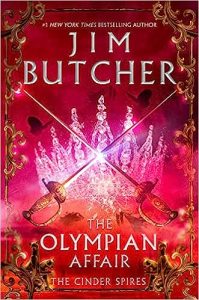 Escape Rating A-: I picked this up this week because I was having a “flail and bail” kind of day. Post Halloween, I was horror’ed out. Even at the horror-adjacency level I’m more comfortable in. I hit the “I can’t evens” and went looking for something a bit more comforting. This would not, I admit, normally have filled that bill, but the NetGalley app was having a flail of its own which is now fixed, but at the time was knocking me out of the book I’m listening to.
Escape Rating A-: I picked this up this week because I was having a “flail and bail” kind of day. Post Halloween, I was horror’ed out. Even at the horror-adjacency level I’m more comfortable in. I hit the “I can’t evens” and went looking for something a bit more comforting. This would not, I admit, normally have filled that bill, but the NetGalley app was having a flail of its own which is now fixed, but at the time was knocking me out of the book I’m listening to.
I had picked up Warriorborn in both text and audio for a couple of reasons. That it was short is the reason it’s being reviewed here and now, but the main reason was the upcoming publication of the second book in the author’s Cinder Spires series, The Olympian Affair. It’s been EIGHT whole years since the first book in the series, The Aeronaut’s Windlass, came out. That’s a long time in book years, and I was wondering more than a bit whether I’d remember enough of how this world is put together to be able to get stuck back in this series.
As Warriorborn is both rather short and takes place after The Aeronaut’s Windlass but before The Olympian Affair, it seemed like a good book to solve all three problems; both NetGalley and my own flailing, and that niggling question about whether I could jump back into the series without at least a serious skim of that once upon a time series opener.
There’s a bit in Warriorborn where Benedict tells the story of an uncle of his who claimed that “if you have one problem, you have a problem. If you have two problems, you might have a solution. And if you can’t craft a solution out of that, what are you even doing?”
I fell right back into this world. We get just the tiniest hint about Benedict’s role in the first book, just enough info to understand why the Spirearch trusts him with this mission, wrapped in a whole bunch of bantering misdirection between himself and his king. It’s a setup, he knows it’s a setup, the Spirearch knows it’s a setup, but everything has to seem above board until the ship lifts and Benedict and his crew are out of reach of meddling politicians.
The true story in Warriorborn is about the mission itself, and that is utterly FUBAR from the outset and EVERYONE knows it. We see just enough of Benedict’s internal perspective to be aware that as calm as he appears on the surface, he’s paddling as fast as he can under the roiling waters.
Which are roiling pretty damn hard as the whole thing becomes a series of out of the frying pan into the fire maneuvers that just keeping getting worse and worse as the mission goes to hell, his crew mostly falls apart and his own chances of survival get smaller with each passing moments.
At which point, just as in The Aeronaut’s Windlass, the mission is saved by sentient cats. I’d be tempted to read the whole damn series – possibly more than once – for more of Rowl of the Nine Claws, the one character I truly remember from the first book and hope to see more of in the second, and Saza and Fenli and the entire clan of Swift Slayers in this one.
One final note, one that is in danger of making this review longer than the actual book. I did have this both in audio and in text. I switched back and forth from one to the other as my circumstances shifted over the course of the day, and I enjoyed it both ways. The text moves compellingly, from one near-disaster to another, while the audio narrator, Euan Morton, did an excellent job of differentiating between a cast of several different characters and personalities to the point where I ended up playing solitaire for an hour just so I could finish the book listening to his narration.
A good reading – and listening – time was absolutely had by this reader no matter which way I absorbed this story!

 Phantom Pond: A Shady Hollow Halloween Short Story by
Phantom Pond: A Shady Hollow Halloween Short Story by 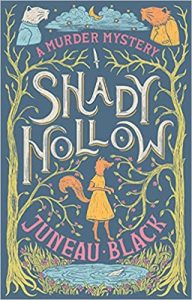 Every society seems to invent a holiday where its denizens can let their hair down, or at least loose the stays on the stricter rules of society, for a day or two – even if they don’t turn those rules completely topsy-turvy.
Every society seems to invent a holiday where its denizens can let their hair down, or at least loose the stays on the stricter rules of society, for a day or two – even if they don’t turn those rules completely topsy-turvy.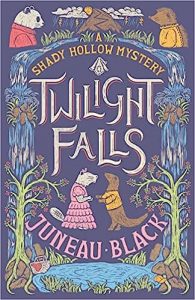 When one of the little Mischief Night revelers doesn’t turn up the following morning, not at home, not at her best friend’s house, not anywhere – and a vaguely threatening missive from Creeping Juniper is found in her place – everyone fears the worst.
When one of the little Mischief Night revelers doesn’t turn up the following morning, not at home, not at her best friend’s house, not anywhere – and a vaguely threatening missive from Creeping Juniper is found in her place – everyone fears the worst.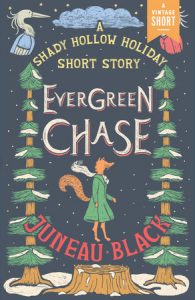 Then it turns the whole scenario on its head, one more time, into the best kind of cathartic happy ending about mysterious misunderstandings until all their, and our, fears are laid peacefully to rest but no character is left under a ‘Rest in Peace’ marker.
Then it turns the whole scenario on its head, one more time, into the best kind of cathartic happy ending about mysterious misunderstandings until all their, and our, fears are laid peacefully to rest but no character is left under a ‘Rest in Peace’ marker.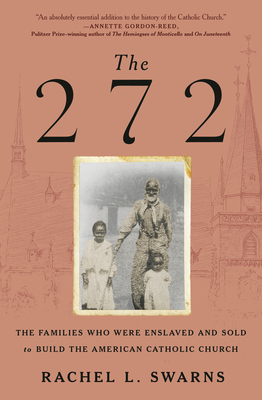 The 272: The Families Who Were Enslaved and Sold to Build the American Catholic Church by
The 272: The Families Who Were Enslaved and Sold to Build the American Catholic Church by 
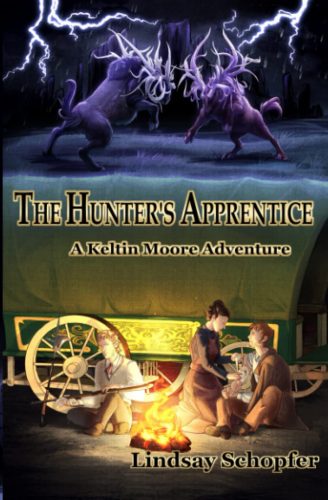 The Hunter's Apprentice: A Keltin Moore Adventure (The Adventures of Keltin Moore #4) by
The Hunter's Apprentice: A Keltin Moore Adventure (The Adventures of Keltin Moore #4) by  Keltin Moore’s fourth adventure represents a turning point for the famous Beast Hunter AND his family of choice in this fantasy-tinged, steampunk-powered series. When his story began in
Keltin Moore’s fourth adventure represents a turning point for the famous Beast Hunter AND his family of choice in this fantasy-tinged, steampunk-powered series. When his story began in 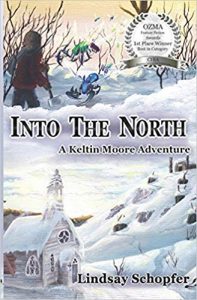 Escape Rating A: I read the second book in this series,
Escape Rating A: I read the second book in this series, 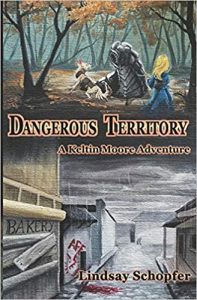 It’s an outsider’s inside view and the reader learns as much as Keltin does.
It’s an outsider’s inside view and the reader learns as much as Keltin does.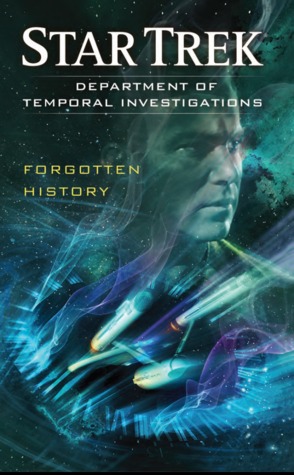 Forgotten History (Star Trek: Department of Temporal Investigations, #2) by
Forgotten History (Star Trek: Department of Temporal Investigations, #2) by 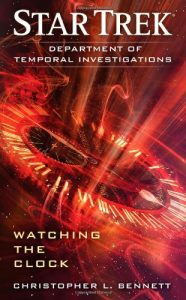 But Kirk, for all of his temporal escapades, and in spite of the way that DTI investigates the ways and means in which time looks back on itself, is more than a century in their rear view mirror. So to speak. And as DTI Agents Lucsly and Dulmur discovered in the first book in the DTI series,
But Kirk, for all of his temporal escapades, and in spite of the way that DTI investigates the ways and means in which time looks back on itself, is more than a century in their rear view mirror. So to speak. And as DTI Agents Lucsly and Dulmur discovered in the first book in the DTI series, 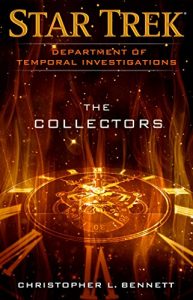 Which means that, while I did like Forgotten History quite a bit, a good bit of that is due to the high nostalgia factor in going back to the era of
Which means that, while I did like Forgotten History quite a bit, a good bit of that is due to the high nostalgia factor in going back to the era of 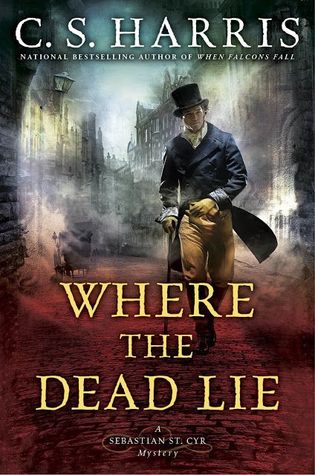 Where the Dead Lie (Sebastian St. Cyr, #12) by
Where the Dead Lie (Sebastian St. Cyr, #12) by 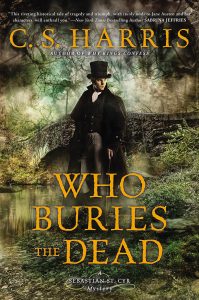 The dead lie in multiple meanings of the word AND in multiple places in this twelfth entry in the long-running, utterly marvelous
The dead lie in multiple meanings of the word AND in multiple places in this twelfth entry in the long-running, utterly marvelous 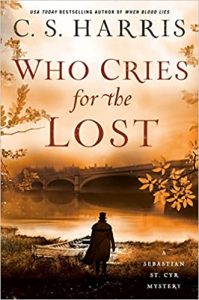 Escape Rating A-: This one is a really hard read. It’s excellent, just as the entire
Escape Rating A-: This one is a really hard read. It’s excellent, just as the entire 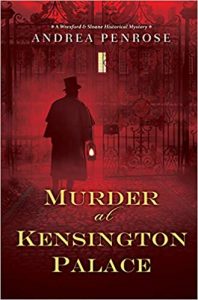 With one child’s, as well as their mother’s, tragedy yet to come in the later books in the series.
With one child’s, as well as their mother’s, tragedy yet to come in the later books in the series. Wild Spaces by
Wild Spaces by 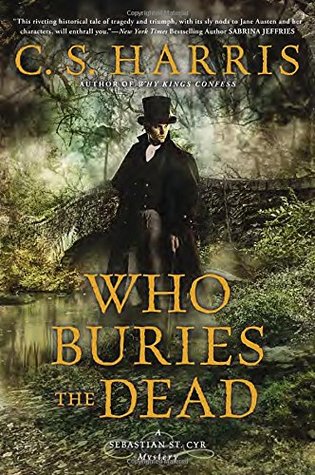 Who Buries the Dead (Sebastian St. Cyr #10) by
Who Buries the Dead (Sebastian St. Cyr #10) by  Whenever I flail around looking for a comfort read, I end up back in Regency England, following Sebastian St. Cyr, Viscount Devlin, as he investigates yet another murder that touches upon the high and mighty of his time and place – whether the high and mighty like it or not.
Whenever I flail around looking for a comfort read, I end up back in Regency England, following Sebastian St. Cyr, Viscount Devlin, as he investigates yet another murder that touches upon the high and mighty of his time and place – whether the high and mighty like it or not.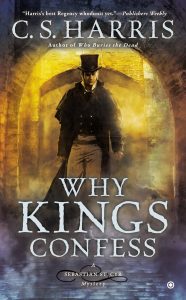 Escape Rating A-: I picked this up this week because yes, I was having a comfort read flail, and Sebastian St. Cyr always delivers – or rather whisks me away from my time to his. Which got me to thinking about the nature of comfort reads in general, and why this works for me in particular.
Escape Rating A-: I picked this up this week because yes, I was having a comfort read flail, and Sebastian St. Cyr always delivers – or rather whisks me away from my time to his. Which got me to thinking about the nature of comfort reads in general, and why this works for me in particular.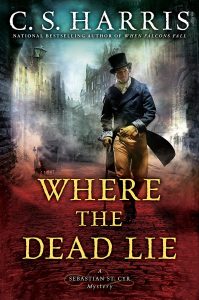 And that is most definitely a comfort to the reader. Or at least this reader.
And that is most definitely a comfort to the reader. Or at least this reader.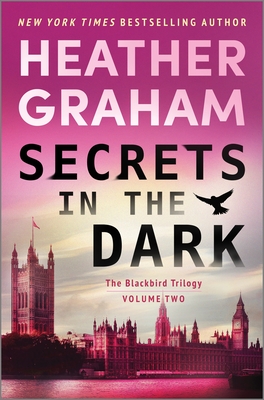 Secrets in the Dark: A Novel (The Blackbird Trilogy, 2) by
Secrets in the Dark: A Novel (The Blackbird Trilogy, 2) by 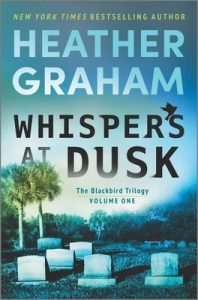 In the first riveting book in the Blackbird trilogy,
In the first riveting book in the Blackbird trilogy, 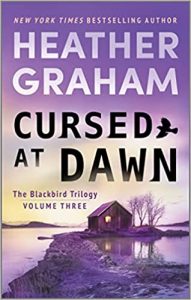 But the Ripper King of the
But the Ripper King of the 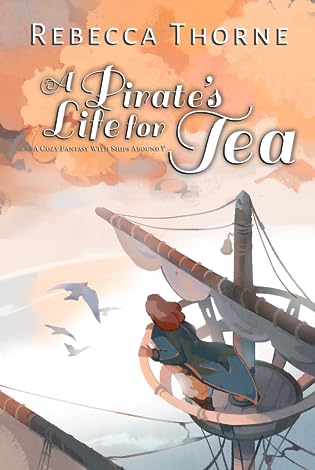 A Pirate's Life for Tea by
A Pirate's Life for Tea by 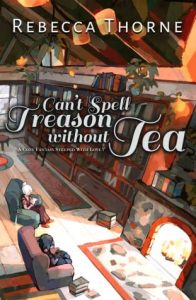 Escape Rating A-: A Pirate’s Life for Tea was even more cozy fantasy fun than
Escape Rating A-: A Pirate’s Life for Tea was even more cozy fantasy fun than